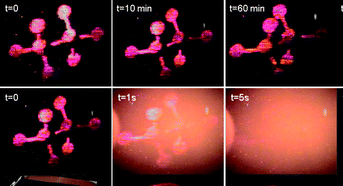Non-linear optical polymers for photorefractive applications†
Abstract
Photorefractive materials can be used to record and erase holograms many times without the need for chemical processing. This places photorefractive materials at the cutting edge for use in updatable holographic display applications. This feature article reviews the basic principles of

- This article is part of the themed collection: Organic nonlinear optics

 Please wait while we load your content...
Please wait while we load your content...